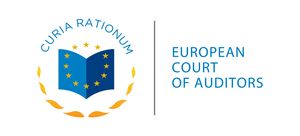
European Court of Auditors (ECA)
Европейска сметна палата
Tribunal de Cuentas Europeo
Evropsky Ucetni Dvur
Den Europaeiske revisionsret
Europäischer Rechnungshof
Euroopa Kontrollikoda
Ευρωπαϊκό Ελεγκτικό Συvέδριo
Cour des comptes européenne
Cúirt Iniúchóiri na Heorpa
Europski Revizorski Sud
Corte dei conti europea
Eiropas Revizijas Palata
Europos Audito Rumai
Európai Szamvevoszék
Il-Qorti Ewropea Ta' l-Awdituri
Europese Rekenkamer
Europejski Trybunał Obrachunkowy
Tribunal de Contas Europeu
Curtea de Conturi Europeana
Európsky Dvor Auditorov
Evropsko Racunsko Sodisce
Euroopan Tilintarkastustuomioistuin
Europeiska revisionsrätten
Search Open Yearbook
This information is part of the Open Yearbook, a free service of UIA's subscription-based Yearbook of International Organizations (YBIO). It includes profiles of non-profit organizations working worldwide in all fields of activity. The information contained in the profiles and search functionality of this free service are limited.
The full-featured Yearbook of International Organizations (YBIO) includes over 77,500 organization profiles, additional information in the profiles, sophisticated search functionality and data export. For more information about YBIO, please click here or contact us.
The UIA is a leading provider of information about international non-profit organizations. The aim of the Open Yearbook is to promote the activities of international non-governmental organizations (INGOs) and intergovernmental organizations (IGOs).
Contact Details
URL: https://www.eca.europa.eu/en
Founded
1975-07-22
History
Available with paid subscription only.Aims
Contribute to improving EU financial management; promote accountability and transparency; act as the independent guardian of the financial interests of the citizens of the Union; check if EU budget has been implemented correctly and that EU funds have been raised and spent legally and in accordance with the principles of sound financial management.
Activities
Available with paid subscription only.Structure
Available with paid subscription only.Languages
Available with paid subscription only.Staff
Available with paid subscription only.Annual Budget
Available with paid subscription only.Finance
Available with paid subscription only.Relations with Inter-Governmental Organizations
Funds and organizations within the Court's area of competence include:
- E-XJ2738 - Agency for the Cooperation of Energy Regulators (ACER);
- E-XM2741 - Body of European Regulators for Electronic Communications (BEREC);
- E-XE2993 - Centre de traduction des organes de l'Union européenne (CdT);
- E-XE2347 - Community Plant Variety Office (CPVO);
- Education, Audiovisual and Culture Executive Agency;
- F-XF1965 - Euratom Supply Agency (ESA);
- F-XF6206 - Eurojust;
- E-XM2692 - Frontex, the European Border and Coast Guard Agency;
- D-XD5516 - European Agency for Safety and Health at Work (EU-OSHA);
- D-XJ7382 - European Union Aviation Safety Agency (EASA);
- E-XJ2856 - European Banking Authority (EBA);
- E-XE5357 - European Centre for the Development of Vocational Training (Cedefop);
- E-XJ3125 - European Centre for Disease Prevention and Control (ECDC);
- D-XM3659 - European Chemicals Agency (ECHA);
- F-XF7202 - European Defence Agency (EDA);
- F-XF2419 - European Environment Agency (EEA);
- European Fisheries Control Agency;
- F-XF6211 - European Food Safety Authority (EFSA);
- F-XF9170 - European Foundation for the Improvement of Living and Working Conditions (Eurofound);
- E-XM3145 - European Union Agency for the Space Programme (EUSPA);
- E-XJ0071 - European Institute for Gender Equality (EIGE);
- E-XM2083 - European Institute of Innovation and Technology (EIT);
- E-XJ4312 - European Insurance and Occupational Pensions Authority (EIOPA);
- E-XE4411 - European Maritime Safety Agency (EMSA);
- E-XE1915 - European Police Office (Europol);
- E-XM0450 - European Research Council (ERC);
- E-XJ2854 - European Securities and Markets Authority (ESMA);
- F-XF1462 - European Training Foundation (ETF);
- D-XM3280 - European Union Agency for Fundamental Rights (FRA);
- F-XJ1550 - European Union Agency for Cybersecurity (ENISA);
- F-XM2732 - European Union Agency for Railways;
- E-XE2565 - European Union Intellectual Property Office (EUIPO);
- Executive Agency for Competitiveness and Innovation;
- Executive Agency Health and Consumers;
- Research Executive Agency (REA).
Links with: F-XK1124 - Cohesion Fund; E-XE3068 - Council of the European Union; E-XE2442 - European Commission (EC); F-XF0667 - European Parliament (EP); E-XE9782 - Publications Office of the European Union (Publications Office); E-XE4197 - SIGMA Programme.
Relations with Non-Governmental Organizations
Library is member of: F-XF5592 - Eurolib; European Archives Group.
- Member of: Association for Human Resources Management in International Organizations (AHRMIO)
- Member of: International Organization of Supreme Audit Institutions (INTOSAI)
- Cooperates with: European School of Administration (EUSA)
- Instrumental in setting up: Syndicat autonome du personnel de la Cour des comptes européenne
- Links with: Association coopérative financière des fonctionnaires internationaux (AMFIE)
- Links with: European Organization of Supreme Audit Institutions (EUROSAI)
- Links with: Group of the Progressive Alliance of Socialists and Democrats in the European Parliament (S and D)
- Links with: Historical Archives of the European Union (HAEU)
- Links with: The Bridge - Forum Dialogue
Members
Available with paid subscription only.Type I Classification
Available with paid subscription only.Type II Classification
Available with paid subscription only.Subjects *
UN Sustainable Development Goals **
UIA Org ID
XF8309
** UN SDGs are linked to the subject classification.
← return to your search page to find additional profiles.
UIA allows users to access and make use of the information contained in its Databases for the user’s internal use and evaluation purposes only. A user may not re-package, compile, re-distribute or re-use any or all of the UIA Databases or the data* contained therein without prior permission from the UIA.
Data from database resources may not be extracted or downloaded in bulk using automated scripts or other external software tools not provided within the database resources themselves. If your research project or use of a database resource will involve the extraction of large amounts of text or data from a database resource, please contact us for a customized solution.
UIA reserves the right to block access for abusive use of the Database.
* Data shall mean any data and information available in the Database including but not limited to: raw data, numbers, images, names and contact information, logos, text, keywords, and links.